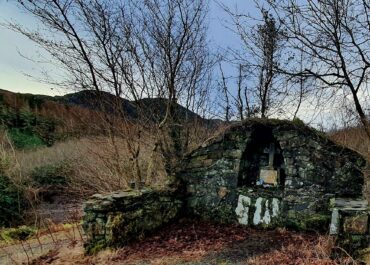Penal Mass station, Baile Na Bó, Co. Donegal
In the townland of Baile Na Bó, County Donegal, stands a stone structure that has puzzled archaeologists for over a century.
Penal Mass station, Baile Na Bó, Co. Donegal
Originally catalogued by William Copeland Borlase in 1897 as a dolmen, this ancient feature was later reclassified as a chamber tomb by Lord Killanin and Michael Duignan in their archaeological surveys of the 1960s. The monument consists of large stone slabs arranged in a distinctive formation typical of megalithic construction, though its exact original purpose remains a subject of scholarly debate.
What makes this site particularly fascinating is how local tradition has woven it into more recent history. According to oral accounts passed down through generations, this prehistoric structure found new life during Ireland’s Penal Laws era, roughly spanning from the late 17th to early 19th centuries. When Catholic religious practices were severely restricted and priests faced persecution, communities had to find creative ways to maintain their faith. The ancient stones at Baile Na Bó allegedly served as a clandestine altar where Mass could be celebrated away from the watchful eyes of authorities.
This dual identity; prehistoric monument and Penal Mass station; reflects a pattern found across Ireland where ancient sites were repurposed for religious gatherings during times of oppression. The structure was officially recorded in the Sites and Monuments Record in 1987 and later included in the Record of Monuments and Places in 1995, ensuring its protection as part of Ireland’s archaeological heritage. Whether originally built as a burial chamber thousands of years ago or serving as a secret place of worship centuries later, these weathered stones continue to stand as silent witnesses to the many chapters of Irish history.


